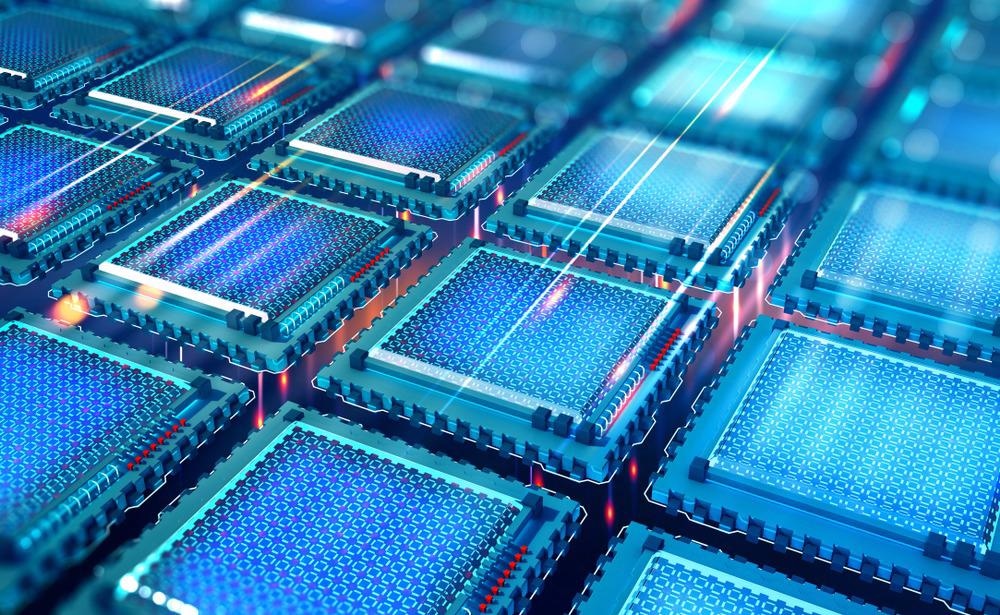
Image Credit: Yurchanka Siarhei/Shutterstock.com
The race to build bigger and better quantum computers has been consuming physicists and major tech giants, such as Google and IBM. With the potential to revolutionize the types and sizes of problems that can be solved computationally, quantum computers may soon change information security, drug design, and even weather forecasts.
The difference between a standard and a quantum computer is in how the chip architecture works. Standard computers are based on high and low electrical voltage settings to generate a stream of 1s and 0s. These can then be interpreted as instructions to carry out any operation, from loading a web page to opening a particular software.
In a standard computer, a bit – the basic unit of information - can either be a 0 or a 1. However, in a quantum computer, a qubit, or quantum bit, can be in a state corresponding to 0 or 1, or even 0 and 1 simultaneously, which is impossible for their classic counterpart. Being in both the 0 and 1 states at the same time is what is known as being in a superposition of states and is key for what gives qubits their incredible information-processing powers.
There have been many different strategies and designs to build a quantum computer with varying degrees of success. What makes building a truly quantum device so complicated is preserving this superposition of states. Even the weakest of mechanical vibrations or the atomic motions that occur at room temperature is enough to cause this superposition of states to collapse, destroying the qubit.
Lasers in Quantum Computing
Many of the most successful quantum computer designs use advanced laser technologies to create and maintain their qubits.
Lasers are often used in quantum computers for several purposes. When an atom absorbs the laser light, this can create a superposition of states for the atom to act as a qubit itself.1
The laser's electromagnetic fields can also trap and control multiple atoms in more arrays2 or cool them to very low temperatures to increase their stability as qubits.3
Other new approaches to building quantum computers involve using the light itself as a basis of a computer by splitting laser beams and using specific crystals to create a quantum processor with excellent scalability.4 However, despite how the laser is used as part of the quantum computer, the laser must meet several critical technical demands.
The stability of the output power and spectrum is a must. If the laser is used to cool atoms to act as qubits, small fluctuations in power can cause atom heating and qubit collapse. These applications are also very power-hungry, with high laser powers also required.
M Squared Solutions
Since its founding in 2006, M Squared has expanded its scope to offer a range of photonics technologies, including laser systems, microscopes, and quantum sensing devices.5
They have recently received £32.5 million in financing to accelerate the growth and development of quantum technologies and lead the DISCOVERY project, a UK Research and Innovation program at the Forefront of the UK’s mission to commercialize quantum technologies.6
M Squared already offers the SolsTiS – Phase Locked system, a complete system based on two phase-locked SolsTiS lasers designed as a single box interferometer set-up that can be used as part of a quantum computer.
They have already successfully used this system as part of a quantum accelerometer, free from the measurement biases that plague classical devices and are not reliant on external communications with satellites.7
If quantum computing's power is to be fully exploited, commercial, robust devices are a must. To achieve this, M Squared will be working alongside eight other industrial partners focusing on bringing neutral atom, ion trap, and optical qubit-based methods to new maturity levels.
The Quantum Future
M Squared laser systems are already at the heart of 90% of research efforts in cold-matter-based approaches to quantum computing. During this project, they will be working on exploiting and improving their existing technologies to increase the qubit fidelity and qubit scalability for more reliable, large computing systems.8
The SolsTiS-based laser systems are continuous-wave Ti:sapphire laser with an ultra-narrow bandwidth, ideal for the precision required to selectively excite narrow atomic linewidths, and boast an impressive power output of up to 5 W.9
The systems are also fully automated, making them straightforward to operate and, crucially for quantum computing applications, offer a relative intensity noise of 0.075% RMS. These systems also boast excellent long-term stability, ideal for measurements with small signals that require long acquisition times.
With their extensive expertise in developing technologies for quantum systems, M Squared offers a vast catalog of devices and expert advice on applying their cutting-edge technologies to pioneering applications.
References and Further Reading
- Weiss, D. S., & Saffman, M. (2017). Quantum computing with neutral atoms. Physics Today, 70(7), 45–50. https://doi.org/10.1063/PT.3.3626
- Schneider, C., Enderlein, M., Huber, T., & Schaetz, T. (2010). Optical trapping of an ion. Nature Photonics, 4(11), 772–775. https://doi.org/10.1038/nphoton.2010.236
- Claude, N. C. T., & Phillips, W. D. (1990). New mechanisms for laser cooling. Physics Today, 43(10), 33–40. https://doi.org/10.1063/1.881239
- Asavanant, W., Shiozawa, Y., Yokoyama, S., Charoensombutamon, B., Emura, H., Alexander, R. N., … Furusawa, A. (2019). Generation of time-domain-multiplexed two-dimensional cluster state. Science, 366(6463), 373–376. https://doi.org/10.1126/science.aay2645
- About Us, M Squared (2020) https://www.m2lasers.com/about.html, accessed 13th December 2020
- News, M Squared (2020) https://www.m2lasers.com/msquared-announces-325m-new-financing-to-accelerate-growth-and-advance-quantum-technologies.html, accessed 13th December 2020
- Phase Locked System, M Squared (2020), https://www.m2lasers.com/solstis-phaselocked.html
- News, M Squared (2020), https://www.m2lasers.com/m-squared-leads-largest-uk-quantum-computing-project.html, accessed 13th December 2020
- SolsTiS, M Squared (2020) https://www.m2lasers.com/solstis.html, accessed 13th December 2020
Disclaimer: The views expressed here are those of the author expressed in their private capacity and do not necessarily represent the views of AZoM.com Limited T/A AZoNetwork the owner and operator of this website. This disclaimer forms part of the Terms and conditions of use of this website.